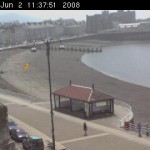Dear Lazyweb,
Reading New Scientist for 2nd December 2006 I came across an article about the Quenamari ice plateau in their “This Week 50 Years Ago” section:
The strange feature of this ice formation is that it exists apparently without fresh supplies of moisture in the middle of a region which is entirely free from ice and snow for most of the year despite its altitude of about 18,000 feet above sea level. No glacier feeds this ice; no high mountain peaks are near enough to snatch rain from the clouds to water it. It is unique – so glaciologists say – and its existence remains a mystery.
Problem is that when you search for what’s known about it now there’s very little information, either how it formed or even whether it still exists given the current episode of global warming that’s going on.
Anyone got any clues ?






I was searching for the same info, but your question now has a higher google ranking than anything about the glacier itself. I’ve got no firm information, but here are some clues.
http://www.allthemountains.com/httpdocs/allincapac.htm gives the location as
13° 52′ 52″ S 70° 26′ 41″ W which you can put into GoogleEarth to check the glacier’s still there.
This http://www.climbingperu.com/cordilleracarabaya.htm has a picture and a link to Allinccapac which has another picture. I presume it’s the icy bit at the top of Allinccapac
These pictures http://es.geocities.com/macusaniweb/viaje_allinccapac3.htm show clouds over the top of the glacier on Allinccapac so I don’t see how the original story can rule out precipitation. Maybe it only snows in El Nino years and the original surveyors were there when it wasn’t snowing.
Mind you, now, the original article seems a bit bogus. I wouldn’t really call it a plateau, just a high mountain. It’s not in the middle of a region of 18000 feet, it is a region of 18000 feet in the middle of a region of 14000 feet which seems to me to be a good enough reason to get relief rain/snow. all the other mountains in the area of similar height are ice-covered, why not it? But then I’m not a glaciologist
Thanks for all that detective work, this PDF file (also found via Google) contains some references to that expedition as well, but it’s late here and I can’t find the mountains referenced there.